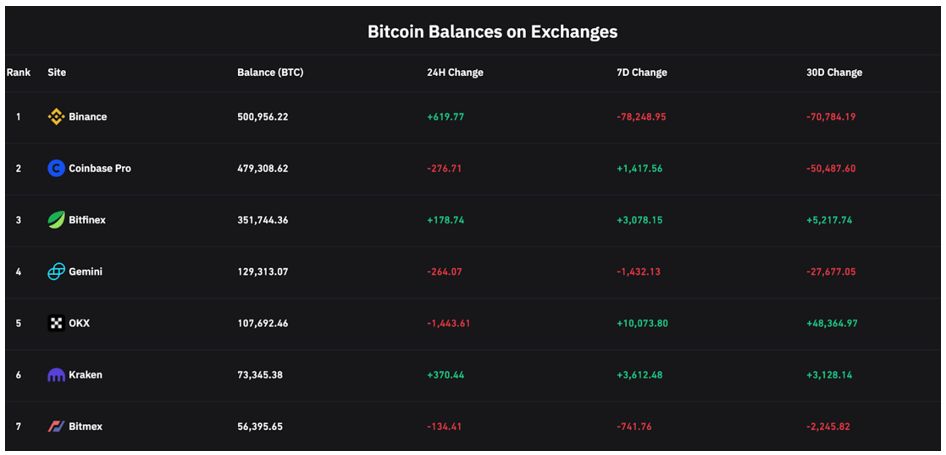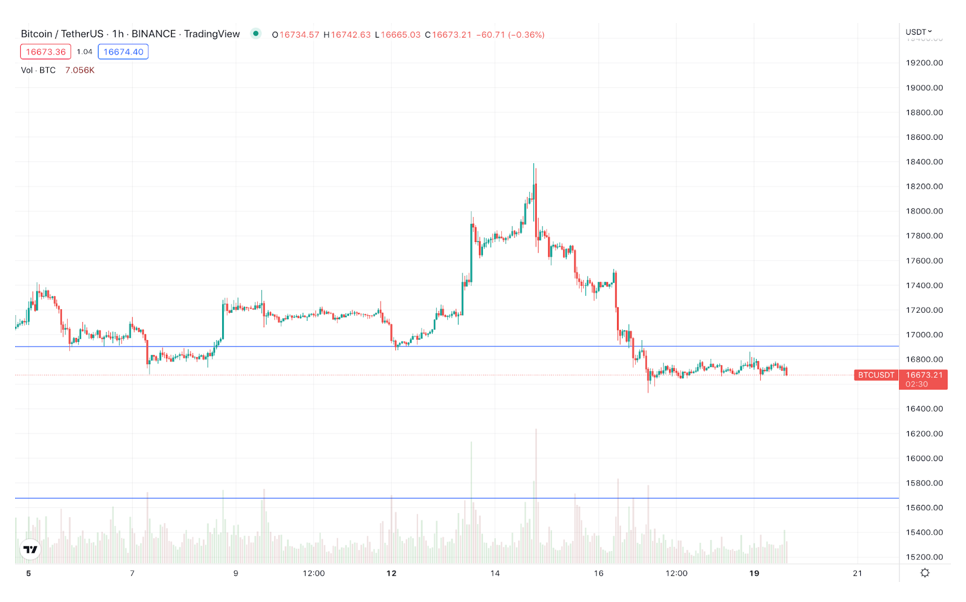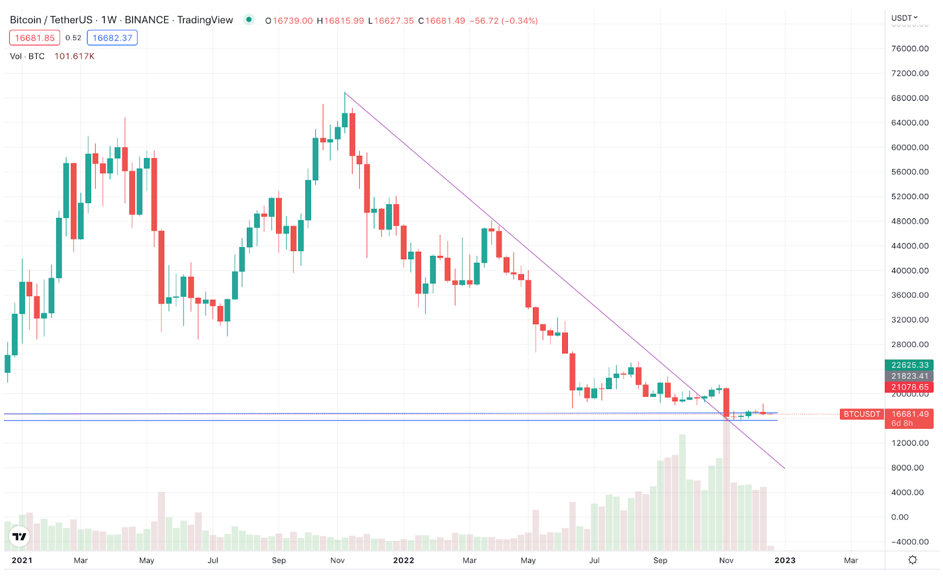Volatility May Have Settled, But Binance Is Still Bringing the FUD
 |
| By Marija Matic |
Even though it may seem otherwise based on headlines, price volatility in the crypto market has been minimal after the collapse of FTX brought the price of Bitcoin (BTC, Tech/Adoption Grade “A-”) to a new yearly low.
The total crypto market cap has been ranging between $821 billion and $907 billion since Nov. 10, though it’s currently at the lower end of this range, sitting at $833 billion.
In the same period, Bitcoin has increased its market dominance from 36.32% to 38.3%, which means that altcoins have shown a weaker performance than BTC.
When it comes to stablecoins, the most dominant, Tether (USDT), has lost a modest $3.3 billion from its market cap since Nov. 10.
Interestingly, Binance’s stablecoin, BUSD, lost the most value ($4.5 billion), while USD Coin (USDC, Stablecoin) gained $2.17 billion. This could mean that some of the fear, uncertainty and doubt surrounding Binance has benefited USDC as users felt more comfortable to hold it than BUSD.
Binance FUD also influenced a new bank run last week, but only on its own exchange.

Click here to see full-sized image.
The FUD wasn’t relegated to just its stablecoin. The Coinglass data above shows a record 78,249 in net outflows of Bitcoin leaving Binance over the past seven days as users withdrew their crypto en masse.
The situation has improved today after Binance.us announced the agreement to buy the assets of Voyager Digital — the bankrupt crypto lender — for $1.022 billion.
This has paused the bank run, so Binance saw more BTC inflows than outflows today. Meanwhile, the bank run on Coinbase (COIN) has completely stopped.
Btw, Binance is not required to publish detailed financial statements because it is not a public company, unlike its U.S. rival Coinbase, which is listed on the Nasdaq. Hence, the regulatory FUD got stronger when two of the auditors that were providing additional audits of prominent exchanges — including Binance — took down their audits from websites, since the efficacy of crypto audits has been called into question recently, primarily due to the collapse of FTX.
All this FUD means it’s no wonder that Bitcoin looks weak after a red weekly closure. It also doesn’t help — Bitcoin or other assets, including stocks — that the U.S. Dollar Index (DXY) still shows relative strength.
The BTC/USDT one-hour chart shows BTC trading has been flat since breaking below support at $16,900 (marked by the blue line) on Dec. 16:

Click here to see full-sized image.
However, if we zoom out and look at the weekly time frame, we can see that BTC broke out of its long-term descending trendline in mid-October and retested it during the FTX crash (purple line):

Click here to see full-sized image.
This is actually long-term bullish, even though there is no positive impulse right now and there may not be one before the year ends.
Notable News, Notes & Tweets
• Donald Trump announces $99 digital trading card NFTs.
• Sam Bankman-Fried changes his mind on extradition to the U.S. after just four days in Bahamian jail. Reports suggest Caroline Ellison is working with the Feds as an informant. .
• Bahrain telecom operator stc Bahrain starts accepting crypto payments.
What’s Next
With the nerves of the market seemingly calmed regarding Binance, market performance over the next few days will mostly depend on how this ongoing situation proceeds … as well as the strength of the dollar index. So, we’ll have to take it day by day from here.
Best,
Marija

